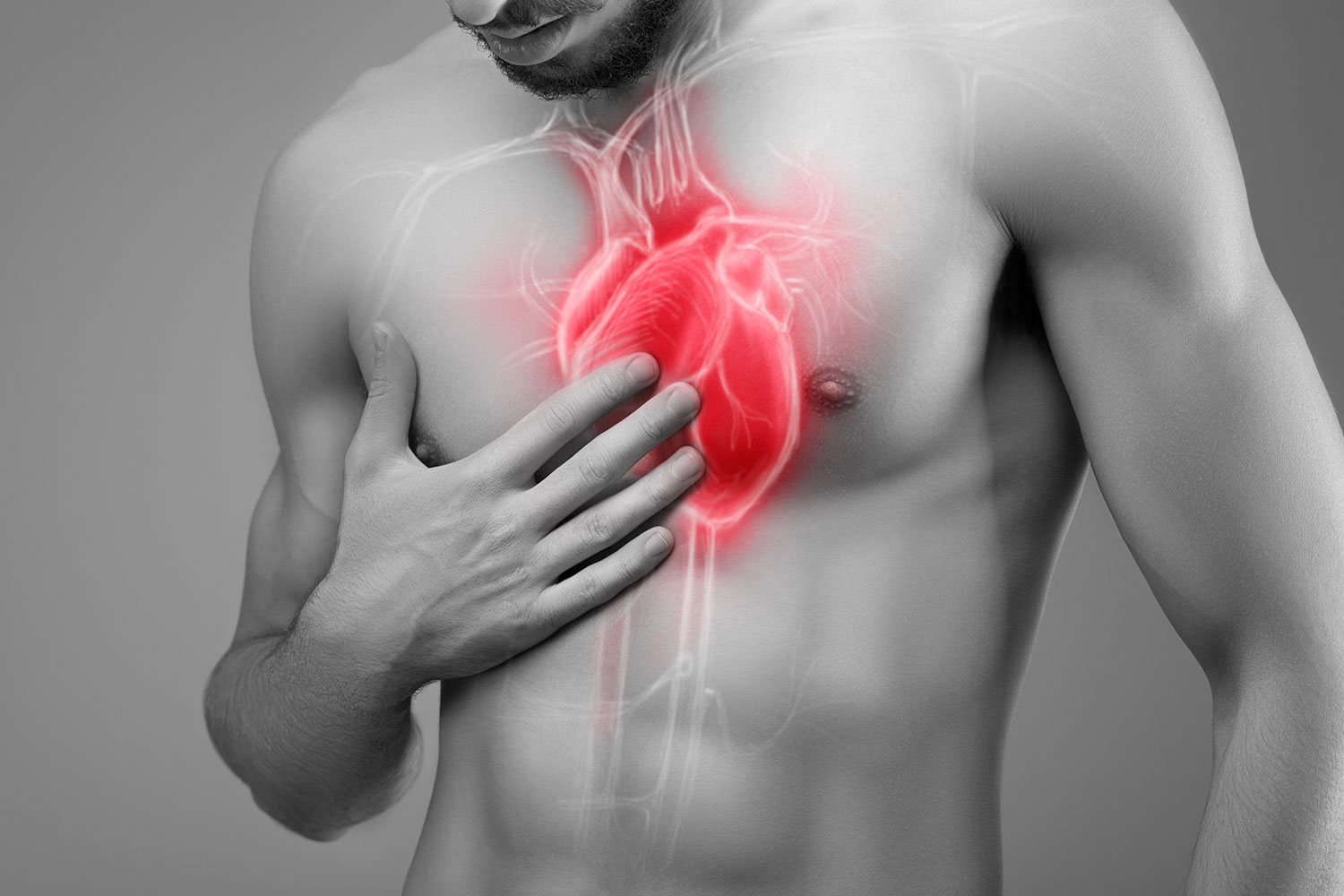Comprehending the Value of Cardiology in Modern Health Care Providers
Cardiology plays a crucial duty in contemporary healthcare, especially as cardiovascular disease remains to be the leading reason for death worldwide. Developments in diagnostics and therapy have actually changed patient treatment, enabling earlier interventions and boosted outcomes. The change in the direction of preventive cardiology encourages individuals to manage their health and wellness proactively. As technology remains to evolve, the integration of innovative services might further redefine cardiology's effect on public wellness, triggering a closer evaluation of emerging fads and their implications.
The Occurrence of Heart Disease and Its Impact on Public Health And Wellness
Heart condition remains the leading cause of fatality internationally, its impact prolongs much beyond specific people to impact public health and wellness systems and economies. The high frequency of heart condition positions a considerable pressure on medical care resources, requiring enhanced financing for rehabilitation, therapy, and prevention programs. Public health efforts should attend to danger factors such as excessive weight, cigarette smoking, and inactive way of livings, which add greatly to the increasing incidence of heart conditions.Moreover, the economic worry connected with heart problem is enormous, incorporating not only direct clinical prices but also indirect costs associated with shed productivity and premature mortality. Areas encounter challenges in managing these expenses, commonly leading to disparities in health care gain access to and end results. As the populace ages and lifestyle-related threats continue to escalate, the urgency for effective cardiology interventions ends up being vital. Resolving heart disease is not just a matter of specific health and wellness but additionally a crucial public health and wellness concern.
Advances in Cardiac Diagnostics and Imaging Techniques
Recent improvements in heart diagnostics and imaging methods have actually transformed the field of cardiology, enhancing the ability to detect and check heart problem. Strategies such as heart MRI, CT angiography, and echocardiography have actually become progressively sophisticated, offering detailed pictures of cardiac structures and functions. These methods permit for the early recognition of problems like coronary artery condition, heart failing, and valvular disorders.Moreover, developments in non-invasive diagnostics, such as wearable technology and remote surveillance gadgets, have encouraged individuals and doctor. These devices facilitate real-time monitoring of heart rhythms and other essential indications, resulting in timely treatments. Furthermore, man-made knowledge is being integrated right into imaging analysis, enhancing accuracy and efficiency in medical diagnosis.
Developments in Therapy Options for Heart Issues
Recent improvements in cardiology have led to considerable technologies in treatment alternatives for heart conditions. These consist of innovative surgical techniques that enhance procedural end results and emerging medicines that supply new avenues for treatment. As the field progresses, these innovations play a crucial duty in improving client treatment and results.
Advanced Surgical Techniques
Developments in medical techniques have changed the landscape of cardiology, supplying new hope for people with heart conditions. Minimally invasive procedures, such as catheter-based interventions, have actually substantially reduced healing times and medical facility keeps. Strategies like robotic-assisted surgery enhance precision, enabling specialists to browse intricate physiological frameworks with better precision. In addition, advancements in imaging innovation facilitate real-time visualization during procedures, improving outcomes. Transcatheter aortic shutoff substitute (TAVR) exhibits an innovation in dealing with aortic constriction, allowing valve replacement without open-heart surgical procedure. Additionally, hybrid methods that combine catheter-based and medical approaches give customized options for different cardiac issues. These innovative medical techniques not only enhance patient safety and security yet likewise broaden treatment alternatives, highlighting the important function of development in modern cardiology techniques.
Emerging Treatments and drugs
As the landscape of cardiology remains to develop, emerging treatments and medicines play a crucial function in improving therapy choices for heart conditions. Technologies such as unique anticoagulants and advanced lipid-lowering representatives have changed the management of heart diseases, greatly minimizing client morbidity and death. Furthermore, the growth of gene treatments and regenerative medicine supplies promising methods for treating problems formerly considered irreparable. Scientific tests are constantly disclosing the effectiveness of these treatments, pushing the borders of standard therapies. Furthermore, the assimilation of digital health and wellness modern technologies helps with customized medicine, enabling customized treatment plans based upon genetic and lifestyle elements. Collectively, these innovations underscore the dynamic nature of cardiology, enhancing individual end results and redefining criteria of care in modern health care.
The Duty of Preventive Cardiology in Patient Care
Preventive cardiology plays a vital function in individual treatment by concentrating on the recognition of threat variables that add to heart problem. Through lifestyle modification strategies and very early discovery methods, health care suppliers can properly lower the occurrence of cardio events - Dr Garcia. This proactive approach not just boosts person end results however likewise promotes long-lasting wellness
Risk Element Identification
While cardiovascular conditions continue to be a leading reason for morbidity and mortality worldwide, effective threat variable recognition serves as a cornerstone of preventative cardiology. Recognizing threat variables such as high blood pressure, household, hyperlipidemia, and diabetes history is crucial for very early intervention. Medical care experts utilize numerous screening approaches to examine these factors, permitting for tailored safety nets. Additionally, recognizing an individual's lifestyle options, such as smoking and physical lack of exercise, further educates danger analyses. This extensive evaluation allows medical professionals to establish tailored treatment plans aimed at mitigating threats. By prioritizing danger variable identification, health care systems can boost patient results and decrease the total concern of cardio diseases, eventually adding to boosted public health and wellness approaches and resource allotment.
Way Of Living Alteration Strategies
A wide variety of studies highlights the critical function of way of life adjustment approaches in reducing heart disease danger. These approaches incorporate nutritional changes, enhanced exercise, cigarette smoking cessation, and weight monitoring. By taking on a heart-healthy diet regimen abundant in fruits, veggies, entire grains, and lean healthy proteins, people can decrease cholesterol degrees and blood stress. Normal exercise strengthens the heart and improves overall cardio wellness. In addition, giving up smoking cigarettes greatly reduces the risk of cardiovascular disease and boosts recuperation prices for those with present problems. Weight administration even more contributes to cardiovascular wellness by minimizing various other danger elements such as diabetic issues and hypertension. Implementing these way of living transforms not only promotes individual health however likewise acts as a keystone of preventative cardiology in individual care.
Very Early Discovery Methods
Lifestyle alterations considerably add to reducing heart disease threats, yet they are most efficient when matched with very early discovery techniques. Preventative cardiology highlights the significance of recognizing prospective heart concerns prior to they escalate right into major problems. Methods such as blood stress More about the author tracking, cholesterol screening, and advanced imaging technologies like echocardiograms play vital functions in reviewing cardiovascular wellness. Biomarkers and genetic screening also boost the precision of very early discovery, enabling for customized precautionary approaches. Regular heart risk examinations encourage health care providers to step in proactively, possibly avoiding cardiac arrest and strokes (Cardiology Jupiter). By incorporating these early detection techniques right into routine care, individuals can benefit from timely way of life treatments and targeted treatments, ultimately enhancing end results and enhancing lifestyle
Integrating Innovation Into Cardiology Practices
As improvements in modern technology continue to reshape different areas, the assimilation of ingenious devices and systems into cardiology techniques has actually ended up being necessary for improving client care and results. Telemedicine systems permit cardiologists to keep track of people remotely, enhancing accessibility to care while reducing the worry on medical care centers. Wearable devices, such as smartwatches, allow constant heart rate monitoring, informing both people and medical professionals to potential problems in real-time. Furthermore, expert system (AI) is being utilized to evaluate vast Recommended Site amounts of cardiac data, assisting in very early medical diagnosis and customized therapy plans. Advanced imaging techniques, consisting of 3D echocardiography, enhance visualization of heart frameworks, bring about a lot more specific treatments. Digital health and wellness documents (EHRs) simplify person information administration, making certain that cardiologists have immediate access to crucial data. With each other, these technical advancements are transforming cardiology, advertising aggressive management and boosted health results for people with cardio conditions.
The Significance of Patient Education And Learning and Engagement
Person education and learning and involvement play a pivotal function in the management of cardio health. By gearing up individuals with knowledge regarding their problems, therapy options, and way of life adjustments, doctor empower individuals to take an active duty in their care. This proactive method can cause improved adherence to suggested medications, dietary modifications, and workout regimens, ultimately reducing the danger of complications.Engagement also cultivates a strong patient-provider connection, encouraging open communication and trust. When patients feel informed and included, they are most likely to voice problems and ask inquiries, which can lead to better scientific results. In addition, instructional sources, such as workshops or digital platforms, can improve understanding and promote self-management methods. Generally, focusing on person education and learning and involvement is essential for enhancing cardiovascular health, improving lifestyle, and decreasing healthcare costs related to heart diseases.
Future Trends in Cardiology and Their Prospective Impact

Often Asked Questions
What Lifestyle Adjustments Can Decrease Heart Illness Risk?
The present question addresses lifestyle changes that can considerably lower heart illness danger. Cardiologist near me. Adopting a balanced diet regimen, involving in regular exercise, maintaining a healthy weight, taking care of stress and anxiety, and staying clear of cigarette can especially enhance cardiovascular health
Just How Can I Acknowledge Very Early Indications of Heart Problems?
Identifying early signs of heart issues includes monitoring symptoms such as breast pain, lack of breath, tiredness, and uneven heart beat. Prompt recognition of these indicators can trigger necessary clinical evaluation and treatment for much better outcomes.
What Are the Differences In Between Cardiologists and Cardiac Surgeons?
The differences between cardiologists and heart surgeons hinge on their duties; cardiologists mostly manage and detect heart disease via non-invasive methods, while heart surgeons execute procedures to correct structural heart issues. Each plays an important, distinct function.

How Usually Should I Obtain My Heart Wellness Checked?
The regularity of heart checkup differs based on specific risk elements. Normally, grownups need to undergo analyses each to two years, while those with status quo may need even more regular analyses as advised by health care specialists.
What Function Does Genes Play in Cardiovascular Disease Risk?
Genetics significantly affects heart illness risk, with familial patterns indicating inherited conditions. Certain genes can predispose people to high blood pressure, cholesterol concerns, and other cardiovascular troubles, highlighting the significance of hereditary screening in assessing heart wellness. Heart illness stays the leading reason of fatality internationally, its effect prolongs far past individual clients to impact public health and wellness systems and economic climates. Public health and wellness campaigns have to deal with danger elements such as obesity, smoking cigarettes, and inactive lifestyles, which contribute significantly to the increasing occurrence of heart conditions.Moreover, the financial worry connected with heart disease is enormous, incorporating not only straight medical prices but additionally indirect costs associated to shed productivity and premature death. Preventive cardiology plays a crucial role in individual treatment by concentrating on the recognition use this link of danger factors that add to heart disease. Man-made knowledge (AI) and equipment understanding are enhancing diagnostics and individual monitoring, allowing early detection of heart conditions. The differences in between cardiologists and heart specialists lie in their functions; cardiologists primarily manage and identify heart problems through non-invasive methods, while heart cosmetic surgeons execute surgical treatments to correct architectural heart issues.